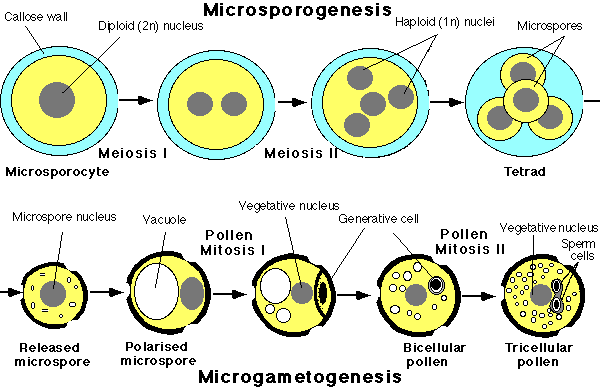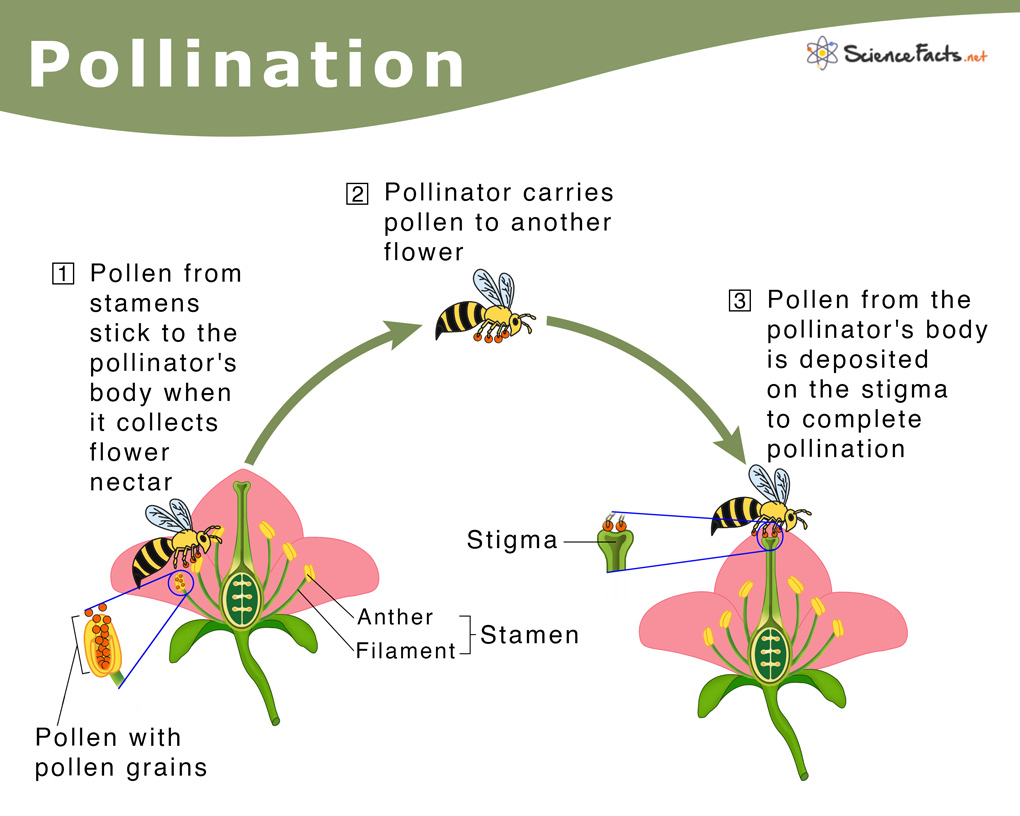CBSE Class 12 Biology Chapter 2 Revision Notes Part 2
Chapter 2: Sexual Reproduction in Flowering Plants Revision Notes Part 2
Sexual reproduction in flowering plants comprises the development of male and female gametes and the pollination of male gametes into female ovules. Fertilization happens after pollination, and the ovules grow into seeds within the fruit. Let’s understand how the process of fertilization takes place in angiosperms.
Formation and Maturation of Pollen
The immature anther develops four lobes quickly because it comprises a homogeneous mass of parenchymatous cells encircled by the epidermis. Every archesporial cell differentiates into an inner primary sporogenous cell and an outer primary parietal cell. Microsporocytes are produced when each primary sporogenous cell divides, and each microspore mother cell splits meiotically to produce pollen grains.
Microgametogenesis
Microgametogenesis is the process of male gametophyte development. The microspore is the initial cell of the male gametophyte and is partially formed at this phase. The Exine (outer layer) and Inline (inner layer) make up the pollen grain’s wall. The exterior layer comprises sporopollenin (chemically inert biological polymers), whereas the inner layer contains pectose and cellulose.
Pre-Pollination Development
Microspores start to germinate in situ before being pollinated. Next to the spore wall is a smaller generative cell. A callose layer surrounds the generative cell. The callose layer eventually disappears.
The anther then discharges the pollen grains. Pollination transports the released pollen grains to the stigma. The pollen particle on the stigma collects water and swells up within a few minutes.
Hydrolytic enzymes and exogenous pectinases are secreted by the pollen tube’s wall, producing a path for pollen to enter. The pollen tube feeds both the generative and vegetative cells. The generative cell divides into two non-motile male gametes. Because it serves no use, the tube nucleus may dissolve.
Pollination
Pollination is the process of transferring pollen grains from the anther to the stigma. It occurs over 5 steps, which are described as follows:
-
Autogamy: Pollen grains are transferred from the anther to the stigma of the same flower.
-
Cleistogamous: Non-opening or cleistogamous flowers (self-pollinating flowers) remain autogamous as there is no probability of cross-pollen falling on the stigma. Even in the lack of pollinators, cleistogamous blooms achieve reliable seed sets. Viola (common pansy), Oxalis, and Commelina are only a few examples.
-
Chasmogamou: Anther, and stigma revealed.
-
Geitonogamy: Pollen grains are transferred from the anther to the stigma of distinct flowers on the same plant. Geitonogamy comprises cross-pollination with a pollinating agent that is genetically identical to autogamy because the pollen grains are derived from the same plant.
-
Xenogamy: Pollen grains are transferred from the anther to the stigma of various plant flowers of the same species.
Fertilization
-
Pollens are delivered to the ovary through the pollen tubes following pollination.
-
One of the male gametes unites with the ovule, or female gamete, upon reaching the ovary (fertilization), and the other unites with the polar nuclei.
-
When a gamete combines with eggs, it produces a zygote, which grows into an embryo over time.
-
The endosperm nucleus is formed when the second gamete combines with the polar nuclei. The embryo receives nutrients from it.
-
Ovules become seeds after fertilization, while the ovary develops into the fruit.
Post-fertilization events include endosperm and embryo development, ovule maturity into the seed(s), and ovary maturation into fruit after double fertilization.
Embryo
An Embryonal Axis and two Cotyledons make up a normal Dicotyledonous Embryo. The Epicotyl is the section of the embryonal axis above the cotyledons that ends with the plumule or stem tip. The Hypocotyl is the cylindrical section of the plant below the cotyledons that ends in the radicle or root tip. A root cap protects the tip of the root. Embryos of monocotyledons have a single cotyledon.
Polyembryony and Apomixis
A phenomenon called Apomixis is found in some angiosperms, particularly in grasses. It results in the formation of seeds without fertilization. Apomicts have several advantages in horticulture and agriculture. Some angiosperms produce more than one embryo in their seed. This phenomenon is called Polyembryony.
Role of Flowers
Flowers are responsible for pollen tube growth, pollen base germination, gamete production, and fertilization. The fruit receives the ovarian component of the carpel. After fertilization, the ovules are transformed into seeds. In the case of heterosporous plants, gametophytes also form inside the spores.
Unisexual or imperfect flowers are those that lack one or both reproductive organs. The many modifications in ovaries aid in disseminating seeds and fruits in some floral regions, such as the calyx.
Sources
Sexual Reproduction in Flowering Plants. https://ncert.nic.in/textbook.php?lebo1=2-16. Accessed 14 Dec, 2021.
]]>

